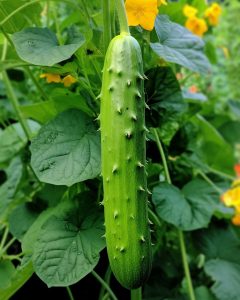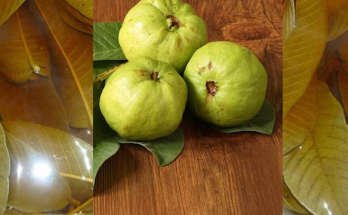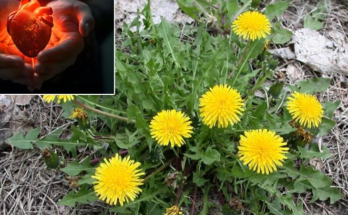Cucumber cultivation is a rewarding endeavor for gardeners and farmers alike, yielding a fresh and versatile vegetable that finds its way into salads, sandwiches, and pickles. However, a crucial aspect of cucumber cultivation often goes unnoticed, leading to disappointing harvests: distinguishing between male and female cucumber flowers.
Neglecting this fundamental task can have a profound impact on your cucumber harvest. In this article, we delve into the significance of male and female cucumber flowers, how to tell the difference, and why understanding this distinction is essential for a successful harvest.
ADVERTISEMENT
The Role of Male and Female Flowers
Cucumbers, like many plants, have separate male and female flowers. These flowers play distinct roles in the pollination process, which is vital for fruit production. Male flowers produce pollen, containing the genetic material necessary for fertilization. Female flowers, on the other hand, house the ovaries that eventually develop into cucumbers if fertilized. Pollination is the transfer of pollen from male to female flowers, enabling the fertilization process to occur.
Distinguishing Between Male and Female Flowers
Identifying the difference between male and female cucumber flowers might seem daunting at first, but with a little guidance, it becomes an essential skill for any cucumber cultivator. Male flowers generally appear earlier and in greater numbers than female flowers. Here are key characteristics to help you differentiate between the two:
Male Flowers:
Tend to appear first and in greater abundance.
Have a slender stem.
Feature a more straightforward structure, with stamens (the pollen-producing parts) as their central focus.
Lack a swollen structure at the base, which is the embryonic cucumber.
Have a slender stem.
Feature a more straightforward structure, with stamens (the pollen-producing parts) as their central focus.
Lack a swollen structure at the base, which is the embryonic cucumber.
Female Flowers:
Appear slightly later than male flowers.
Have a small cucumber-like swelling at the base of the flower, indicating the developing fruit.
Feature a stigma (the receptive part for pollen) in the center, surrounded by stamens.
Have a small cucumber-like swelling at the base of the flower, indicating the developing fruit.
Feature a stigma (the receptive part for pollen) in the center, surrounded by stamens.
The Crucial Role of Pollination
Proper pollination is crucial for a bountiful cucumber harvest. When bees or other pollinators transfer pollen from male to female flowers, the fertilization process initiates the development of cucumbers. If pollination does not occur, female flowers wither and fall off, resulting in a reduced yield or even an entirely fruitless harvest.
How Neglecting the Distinction Can Ruin Your Harvest
Failing to distinguish between male and female cucumber flowers can have severe consequences for your harvest. Without adequate pollination, you may witness a range of issues:
Reduced Yield: Incomplete pollination leads to fewer cucumbers or misshapen, stunted ones.
Bitter Cucumbers: Inadequately pollinated cucumbers can develop a bitter taste, rendering them unpalatable.
Wasted Resources: Caring for unproductive female flowers consumes resources, including water and nutrients, that could be better allocated to viable fruits.
What else can ruin a cucumber harvest?
A cucumber harvest can be ruined by a variety of factors beyond just neglecting the distinction between male and female flowers. Here are some other potential factors that can adversely affect your cucumber harvest:
Poor Soil Conditions: Cucumbers thrive in well-draining, nutrient-rich soil. Soil that is compacted, lacks proper drainage, or has imbalanced nutrient levels can hinder plant growth and fruit development.
Inadequate Watering: Irregular or insufficient watering can lead to stressed plants, causing poor fruit development, bitterness, and even blossom end rot (a condition where the bottom of the cucumber becomes sunken and dark).
Improper Pollination: While recognizing male and female flowers is vital, insufficient pollinators (like bees) or adverse weather conditions can lead to incomplete pollination and subsequently misshapen or underdeveloped cucumbers.
Pest Infestations: Common cucumber pests such as aphids, cucumber beetles, and spider mites can damage leaves, flowers, and fruits. Severe infestations can weaken the plant and reduce fruit quality.
Diseases: Cucumbers are susceptible to diseases like powdery mildew, downy mildew, bacterial wilt, and cucumber mosaic virus. These diseases can impact plant health, reduce yields, and even kill the plants.
Overcrowding: Planting cucumbers too closely together can limit air circulation, promote disease spread, and lead to competition for nutrients and sunlight, resulting in smaller and lower-quality cucumbers.
Poor Trellising or Support: Cucumbers are often grown on trellises or supports to keep the fruits off the ground and improve air circulation. Failing to provide adequate support can lead to fruit deformities, sunburn, and disease susceptibility.
Unfavorable Weather Conditions: Extreme heat or cold, fluctuations in temperature, and prolonged periods of rain can stress cucumber plants and affect their growth and fruit development.
Inadequate Fertilization: Cucumbers require proper nutrition to thrive. Insufficient or imbalanced fertilization can result in stunted growth, yellowing leaves, and reduced fruit production.
Improper Pruning: While some pruning can be beneficial, excessive pruning or improper techniques can reduce the plant’s ability to produce cucumbers.
Lack of Pest Control Measures: Failing to implement proper pest control measures, such as using organic pesticides or practicing integrated pest management, can lead to severe pest damage and reduced yields.

Late Harvesting: Allowing cucumbers to become overripe on the vine can lead to tough and bitter fruits, as well as signal the plant to stop producing new cucumbers.



